Shin splints are a common injury among athletes, caused by weak shin and lower leg muscles. Exercises are crucial for recovery and prevention.
What Are Shin Splints?
Shin splints, also known as medial tibial stress syndrome, involve inflammation of the lining of the shin bone. This condition often arises from increased physical activity, leading to discomfort in the lower leg. The pain is typically felt along the inner edge of the tibia, especially during or after exercise. It is most common in athletes or individuals who recently intensified their training. Shin splints are not fractures but rather a response to stress on the muscles and bones in the lower leg. Proper management and exercises can help alleviate symptoms and prevent recurrence.
Importance of Exercise in Recovery
Exercise plays a crucial role in recovering from shin splints by strengthening the muscles and improving flexibility. Stretching and strengthening exercises target the lower leg, reducing pain and enhancing mobility. Consistency in these routines helps prevent future injuries and supports overall leg health. By incorporating specific exercises, individuals can accelerate recovery and return to normal activity levels effectively.

Understanding Shin Splints
Shin splints, or medial tibial stress syndrome, commonly affect athletes due to increased physical activity. Understanding this condition is key to effectively managing symptoms and preventing recurrence through targeted exercises.
Causes and Risk Factors
Shin splints, or medial tibial stress syndrome, often result from overuse or repetitive stress on the lower leg muscles, particularly the tibialis anterior. Weakness in the shin and calf muscles, improper footwear, and running on hard surfaces can exacerbate the condition. Sudden increases in exercise intensity or duration also contribute to the risk. Additionally, poor running mechanics, such as overpronation, can strain the muscles and bone tissue. Understanding these factors is essential for developing effective prevention and treatment strategies, especially for athletes engaged in high-impact sports or activities. Addressing these causes can significantly reduce the likelihood of developing shin splints.
Symptoms and Diagnosis
Shin splints typically cause pain along the inner edge of the shinbone, worsening during or after exercise. Symptoms include tenderness, swelling, or discomfort in the lower leg. Pain may radiate along the tibia, especially during activities like running or jumping. Diagnosis involves a physical exam to assess pain locations and muscle tightness. Imaging tests, such as X-rays or MRIs, may be used to rule out stress fractures or other injuries. Early detection is crucial for effective treatment and preventing prolonged recovery. Accurate diagnosis ensures targeted exercises and interventions can be implemented to address the root cause of the pain.
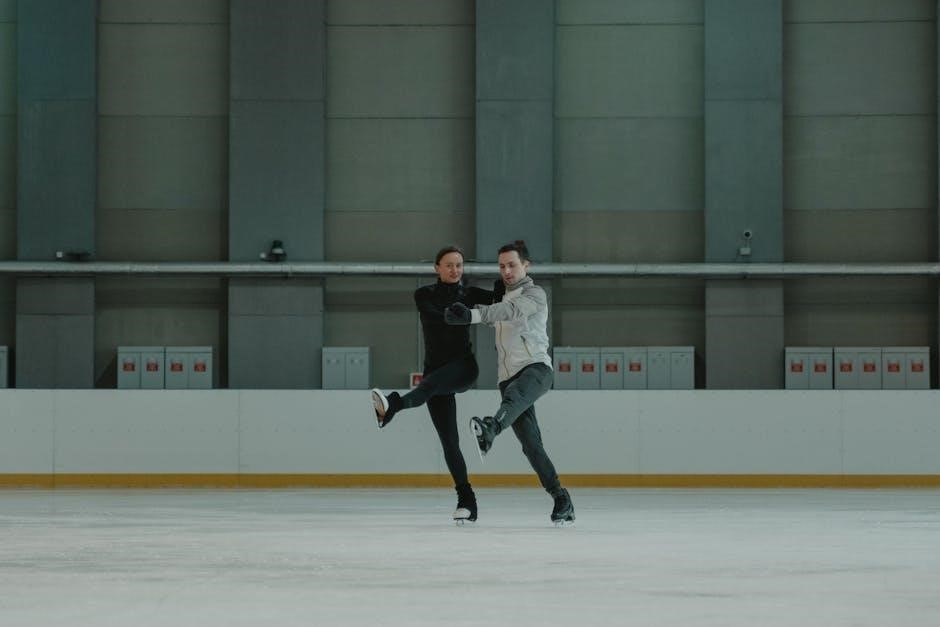
Prevention Strategies
Shin splints can be prevented through proper warm-ups, gradual increases in exercise intensity, and wearing supportive footwear. Orthotics and avoiding hard surfaces also help reduce risk.
Proper Warm-Up and Cool-Down Routines
A proper warm-up prepares muscles for exercise, reducing shin splint risk. Start with light cardio like jogging in place or cycling for 5-10 minutes. Dynamic stretches, such as leg swings and calf raises, improve blood flow. After exercise, cool down with static stretches, like calf and Achilles tendon stretches, holding each for 20-30 seconds. This routine helps prevent muscle tightness and promotes recovery. Incorporating these practices into daily workouts can significantly lower the likelihood of developing shin splints and support overall lower leg health. Consistency is key for optimal results and injury prevention.
Gradual Increase in Exercise Intensity
A gradual increase in exercise intensity is crucial for preventing shin splints. Sudden spikes in running volume or intensity can overwhelm the lower leg muscles, leading to fatigue and stress on the shinbones. To avoid this, athletes should adopt a structured training plan, allowing muscles and bones to adapt. Increase intensity by no more than 10% weekly, ensuring adequate recovery between sessions. Consistency and patience are key to building strength and endurance without causing injury. This approach minimizes the risk of shin splints while promoting long-term progress and overall lower leg health;

Stretching Exercises for Shin Splints
Stretching is essential for relieving shin splint discomfort and improving flexibility. Focus on calf, Achilles, and gastrocnemius stretches to target the lower leg muscles effectively.
Calf Stretch
Calf Stretch is a fundamental exercise for alleviating shin splint discomfort. Sit on a firm surface with your injured leg straight. Loop a towel around the ball of your foot, gently pulling it back toward your head. Hold for 15-30 seconds, then release. Repeat 2-3 times. This stretch targets the gastrocnemius and soleus muscles, improving flexibility and reducing tension. Avoid bouncing; focus on a steady, gentle pull. Perform daily, especially after activity, to promote healing and prevent recurrence. If pain occurs, stop the exercise immediately and consult a healthcare professional.
Achilles Tendon Stretch
Stand facing a wall with one hand on it for balance. Step the affected leg back about a foot, keeping the heel on the ground. Bend the front knee slightly and lean forward until a stretch is felt in the Achilles tendon. Hold for 15-30 seconds and repeat 2-3 times. This stretch reduces stiffness and improves tendon flexibility, essential for shin splint recovery. Avoid overstretching, as it may cause discomfort. If pain occurs, discontinue the exercise and consult a healthcare professional. Regular stretching helps prevent future injuries and enhances overall lower leg mobility.
Standing Gastrocnemius Stretch
Stand facing a wall with your hands on it for support. Step one leg back about a foot, keeping your heel on the ground. Bend the front knee slightly, leaning forward until you feel a stretch in the back of your calf. Hold for 15-30 seconds and repeat 2-3 times on each leg. This stretch targets the gastrocnemius muscle, reducing tightness and improving flexibility. It’s essential for relieving shin splint discomfort and preventing future injuries. Keep the back heel pressed to the ground and the foot straight to maximize the stretch. Regular practice helps maintain lower leg mobility and strength.
Seated Toe Stretch
Sit on the floor with your legs extended straight in front of you; Loop a towel or resistance band around the ball of your foot. Gently pull the towel back toward your head, keeping your knee straight, until you feel a stretch in your arch and calf. Hold for 15-20 seconds, then release. Repeat 2-3 times on each leg. This stretch targets the flexor muscles in your lower leg, improving circulation and reducing muscle tension. It’s effective for alleviating shin splint discomfort and preventing tightness. Focus on slow, controlled movements to maximize the stretch benefits.
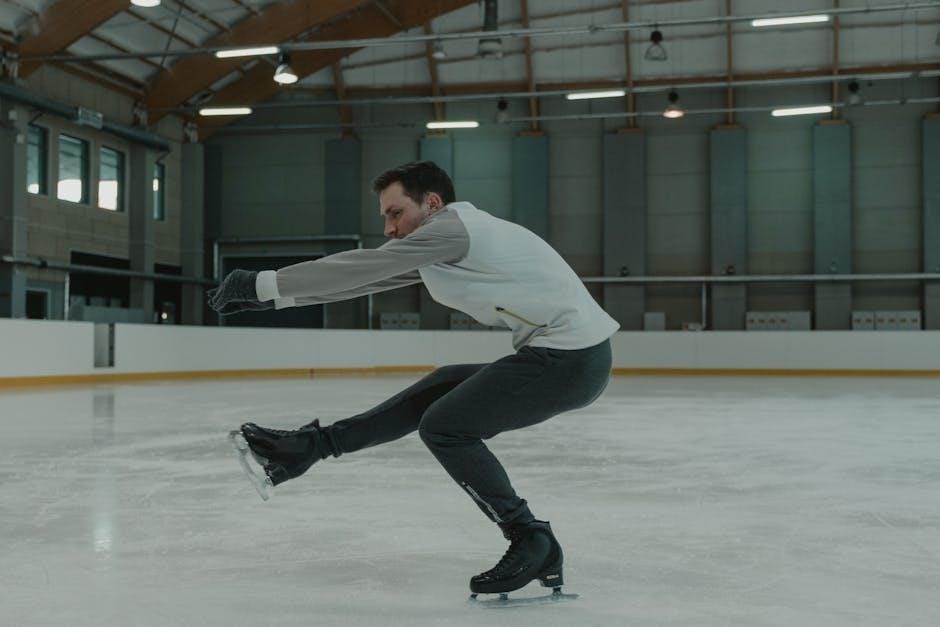
Strengthening Exercises
Strengthening exercises target the muscles around the shin and lower leg, helping to reduce injury risk and improve endurance. Focus on toe raises, heel drops, and step-ups.
Toe Raises
Toe Raises are an effective exercise for strengthening the muscles around the shin and lower leg. To perform, stand barefoot or wear socks for grip. Slowly raise your toes off the ground, keeping your heels planted, and hold for 5-10 seconds. Lower your toes back down without jerking. Aim for 3 sets of 15-20 repetitions daily. This exercise targets the tibialis anterior muscle, crucial for shin stability. Gradually increase the number of sets as strength improves. Consistency helps prevent shin splint recurrence and enhances overall lower leg endurance.
Heel Drops
Heel Drops are a simple yet effective exercise for strengthening the Achilles tendon and calf muscles, which are essential for shin stability. Stand on the edge of a step or sturdy platform with your heels hanging off. Slowly raise your heels as high as possible, then lower them below the step, stretching the calf muscles. Hold for 2-3 seconds at the lowest point. Perform 3 sets of 15-20 repetitions. This exercise improves flexibility and strength, reducing the risk of shin splints. For variation, try single-leg heel drops or add weights for increased resistance. Proper form is crucial to avoid strain.
Step-Ups
Step-Ups target the lower leg muscles, improving strength and stability to reduce shin splint risk. Use a sturdy box or platform. Step forward with the injured leg, leading with the heel. Bring the other leg up to meet it, then step down with the same leg. Perform 3 sets of 10-15 repetitions on each leg. Focus on controlled movements to avoid strain. Start with a low step and gradually increase height as strength improves. This exercise enhances functional strength and promotes proper gait mechanics, crucial for shin health and injury prevention. Consistency is key for optimal results. Always prioritize proper form to prevent strain.
Ankle Alphabet
Ankle Alphabet is a simple yet effective exercise for improving ankle mobility and strength, which helps prevent shin splints. Sit or stand with the injured leg unsupported. Write the alphabet in the air using the foot, starting from A to Z. Move slowly and control the motion to engage the muscles around the ankle and shin. Perform 2-3 sets, ensuring smooth transitions between letters; This exercise enhances flexibility, strength, and coordination, reducing the risk of shin-related injuries. Consistency is key to achieving lasting benefits and supporting overall lower leg health. Incorporate this exercise into your daily routine for optimal results.

Balance and Proprioception Training
Balance and proprioception exercises enhance stability and body awareness, reducing injury risk. They strengthen muscles around the ankles and shins, improving overall lower leg function and coordination during activities.
Single-Leg Balance
Single-leg balance exercises are essential for improving stability and proprioception, which are critical for preventing and recovering from shin splints. To perform this exercise, stand upright next to a sturdy chair for support. Shift your weight onto one leg, keeping the other foot lifted slightly off the ground. Hold this position for 20-30 seconds, focusing on maintaining balance without swaying. Gradually increase the duration as your stability improves. Repeat on the other leg. For added challenge, remove the chair or incorporate slow arm movements while balancing. This exercise strengthens the muscles around the ankles and shins, enhancing overall lower leg function and reducing injury risk.
Balance and Reach Exercises
Balance and reach exercises enhance stability and proprioception, crucial for shin splint recovery. Stand upright next to a chair for support. Lift one leg slightly off the ground, keeping it straight. Slowly reach forward, sideways, and backward with your arm, touching points on the floor in a clockwise pattern. Maintain balance by keeping your core engaged and your knee stable. If needed, lightly touch the chair for support. Switch legs and repeat. This exercise improves balance, strengthens lower leg muscles, and reduces injury risk by enhancing neuromuscular coordination and overall stability.
Wobble Board Training
Wobble board training is an effective tool for improving balance, proprioception, and overall lower leg stability. Stand on the wobble board with feet shoulder-width apart, engaging your core to maintain balance. Perform single-leg stands, heel-to-toe walks, or gentle tilts in multiple directions. Gradually increase difficulty by closing your eyes or adding arm movements. This exercise strengthens the muscles around the shin, enhances neuromuscular coordination, and reduces the risk of recurring injuries. Consistent practice helps restore functional stability, making it easier to return to physical activities without discomfort or pain related to shin splints.

Additional Recovery Tips
Rest and ice therapy are essential for reducing inflammation. Foam rolling helps relieve muscle tension, while proper hydration supports muscle function and recovery. Consistency is key.
Foam Rolling and Self-Myofascial Release
Foam rolling is a highly effective recovery method for shin splints, targeting muscle tension in the calves and shins. By applying gentle pressure and rolling slowly over the affected areas, you can release tightness and improve blood flow. Focus on the gastrocnemius and soleus muscles, as these are often strained. Use a foam roller 2-3 times weekly, especially after intense workouts. Spend 30 seconds on each area, moving slowly to identify tender spots. Avoid rolling directly over the bone to prevent discomfort. Regular foam rolling can reduce muscle soreness and enhance recovery, making it a valuable addition to your shin splint management routine.
Ice Therapy and Rest
Ice therapy is a cornerstone of shin splint recovery, reducing inflammation and pain. Apply an ice pack wrapped in a cloth to the affected area for 15-20 minutes, 2-3 times daily. This helps constrict blood vessels, minimizing swelling and discomfort. Rest is equally crucial; avoid activities that worsen pain to allow tissues to heal. Elevate the leg to further reduce swelling. Combining ice with rest ensures faster recovery and prevents further injury. Consistency in this routine, along with proper exercises, supports overall shin splint management and strengthens the lower leg muscles for long-term relief.
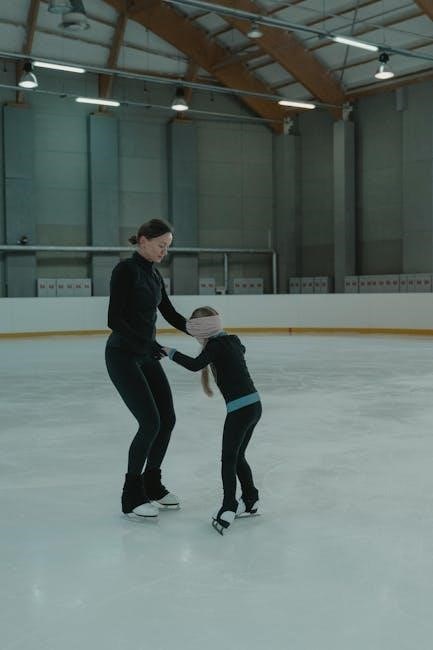
Footwear and Orthotics
Proper footwear and orthotics are essential for managing shin splints, providing support and reducing stress on the lower leg muscles, especially during physical activity.
Choosing the Right Shoes
Proper footwear plays a crucial role in managing shin splints. Select shoes with good arch support, cushioning, and a stable heel to reduce stress on the lower leg. Avoid worn-out shoes, as they lose structural integrity and can exacerbate pain. Opt for footwear designed for your specific activity, such as running or cross-training. Replace shoes regularly, especially if you notice significant wear. Additionally, consider shoes with a rockersole or mild flexibility to promote natural foot movement. Proper fit and comfort are essential to prevent further injury and support recovery.
Use of Orthotic Inserts
Orthotic inserts can significantly aid in managing shin splints by addressing biomechanical issues. These inserts redistribute pressure, reduce stress on the tibia, and provide additional arch support. Custom orthotics are often recommended for individuals with flat feet or abnormal gait patterns, as they help correct alignment and alleviate pain. Over-the-counter inserts can also be effective, but a professional fitting ensures optimal results. By stabilizing the foot and ankle, orthotics minimize strain on the lower leg muscles, promoting healing and preventing recurrence. They are a valuable complement to exercise and footwear strategies in recovery plans.
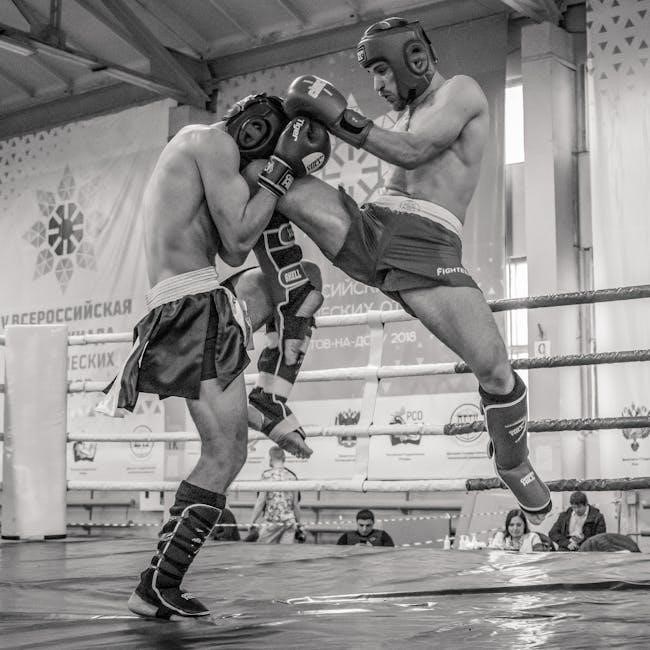
Nutrition and Recovery
A balanced diet rich in protein and anti-inflammatory foods supports muscle repair. Staying hydrated and incorporating omega-3s can reduce inflammation, while electrolytes aid muscle function and recovery;
Role of Diet in Injury Recovery
A well-balanced diet plays a crucial role in recovering from shin splints. Foods rich in protein help repair damaged muscles, while anti-inflammatory foods like berries and leafy greens reduce swelling. Staying hydrated is essential for muscle function and recovery. Incorporating omega-3 fatty acids from fish or flaxseeds can further reduce inflammation. A diet high in vitamin D and calcium supports bone health, which is vital for shin health. Avoiding processed foods and excessive sugar can prevent further inflammation. Proper nutrition complements exercise and accelerates the healing process, ensuring a stronger return to physical activity.
Hydration and Supplementation
Proper hydration is essential for muscle function and recovery, especially during shin splint exercises. Water helps maintain flexibility and reduces muscle cramps. Additionally, supplementation can support recovery. Omega-3 fatty acids from fish oil or flaxseeds reduce inflammation, while vitamin D and calcium strengthen bone health. Magnesium aids in muscle relaxation and prevents spasms. A balanced intake of these nutrients, combined with adequate hydration, enhances recovery and prevents further injury. Consulting a nutritionist can help tailor a supplementation plan to individual needs, ensuring optimal support for shin splint exercises and overall recovery.
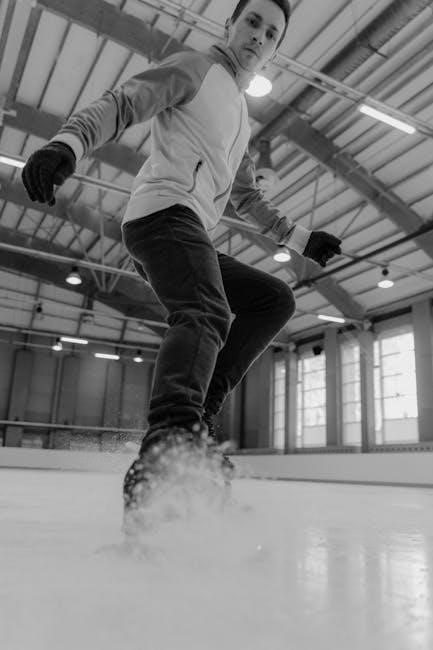
When to Seek Professional Help
Seek professional help if shin splint pain persists, worsens, or is accompanied by severe swelling. Consult a healthcare professional for proper diagnosis and treatment options.
Signs of Severe Injury
Severe injury signs include intense, persistent pain along the shin, significant swelling, or limited mobility. If pain worsens with activity or radiates, seek medical help immediately. Numbness or tingling in the foot may indicate nerve involvement. Severe cases, such as stress fractures, require professional evaluation. Ignoring these symptoms can lead to prolonged recovery or further damage. Consult a specialist if pain persists despite rest and rehabilitation exercises.
Role of Physical Therapy
Physical therapy plays a vital role in recovering from shin splints by addressing muscle imbalances and improving flexibility. A therapist designs personalized exercise plans, focusing on calf stretches, toe raises, and heel drops. They also educate patients on proper running mechanics and footwear. Manual therapies, such as soft tissue massage, can reduce muscle tension. Strengthening exercises for the lower leg and core are emphasized to enhance stability. Physical therapy accelerates recovery, reduces pain, and prevents future injuries, ensuring a safe return to physical activities. Regular sessions with a therapist are often recommended for optimal results.
Consistent shin splint exercises, combined with proper rest and footwear, effectively alleviate pain and prevent recurrence, enabling a safe return to physical activities and maintaining long-term shin health.
Shin splints, or medial tibial stress syndrome, are common in athletes, especially those new to running or high-impact sports. Key recovery strategies include stretching exercises like calf, Achilles, and gastrocnemius stretches, as well as strengthening exercises such as toe raises and heel drops. Prevention involves proper footwear, orthotics, and gradual increases in exercise intensity. Consistency in these routines is vital to alleviate pain, prevent recurrence, and promote long-term shin health. Rest, ice therapy, and balanced nutrition also play essential roles in the recovery process, ensuring a safe return to physical activity.
Importance of Consistency in Exercise
Consistency in exercise is vital for effectively managing and preventing shin splints. Regular stretching and strengthening routines help rebuild muscle strength and improve bone density, reducing the risk of recurrence. Inconsistent efforts may lead to incomplete recovery, causing prolonged pain or chronic issues. Gradual progression ensures muscles and tendons adapt without overload. Stopping exercises too early can result in relapse, emphasizing the need for sustained commitment. Consistency also promotes long-term shin health, enabling a safe return to physical activity and maintaining overall fitness levels. It is essential to adhere to a well-structured program for optimal results and lasting relief from symptoms.